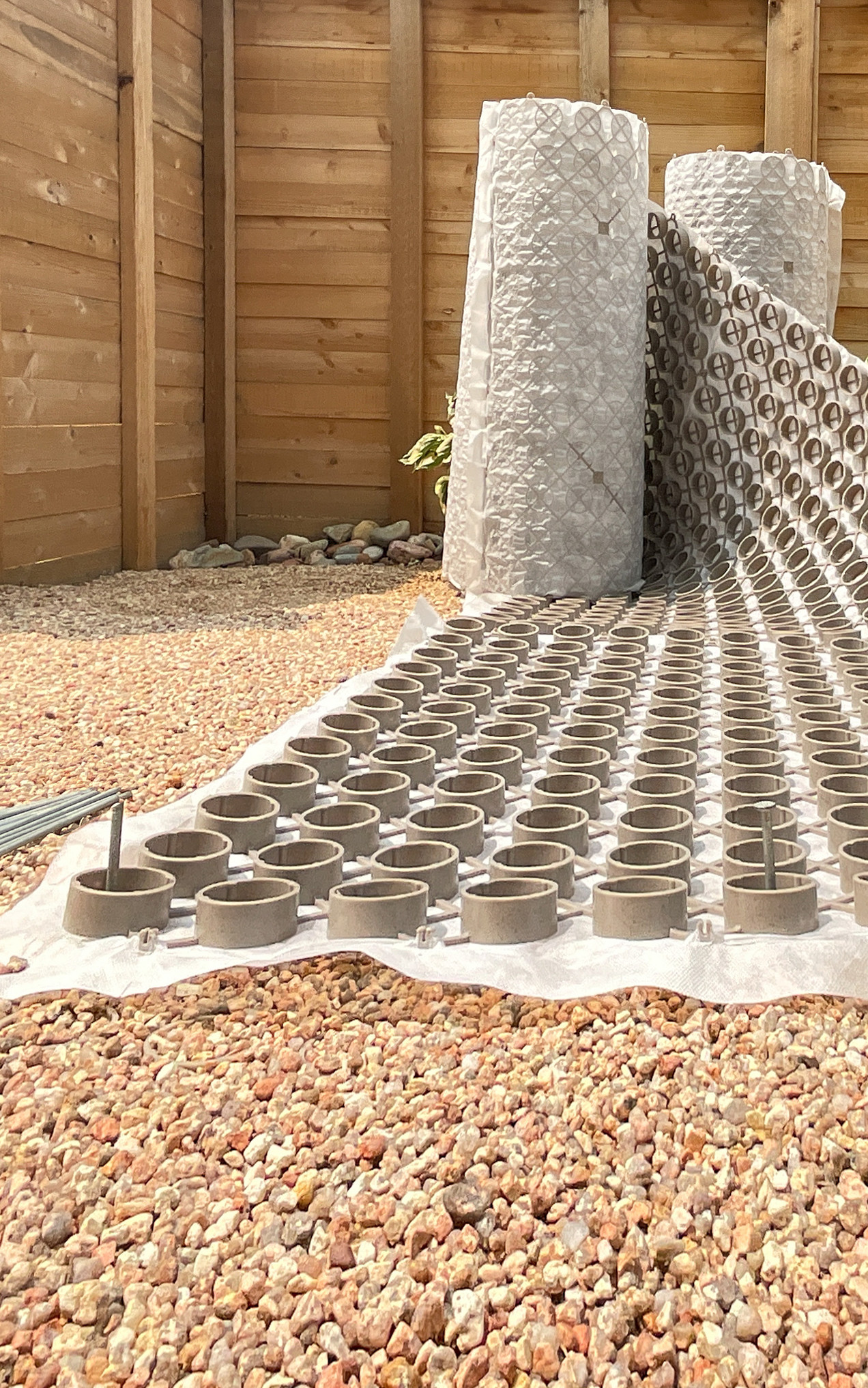When installing a porous paver, it is important to use the right base course material. There are some do’s and don’ts for this kind of project, and let’s take a look.
Best Base Course Material for Porous Pavers:
The base course is a crucial component of a porous paving system, providing the necessary support and drainage to ensure its success. Take applications with Grasspave2 and Gravelpave2 by Invisible Structures for example. Water from rain or snow melt first seeps through the 92 percent void space of these porous paving solutions. It then passes through a permeable base course and end up in either a retention/detention system or natural water resources.
There are several excellent choices for base course materials for permeable and porous paving materials. It is even better if they are locally sourced from a sustainability standpoint. That said, it is equally important to be aware of materials that are not recommended due to their limitations in supporting the function of porous pavements.
Suitable Materials to Consider for Porous Pavers:
Sandy gravel’s well-graded particle size offers good drainage properties
Often sourced from local quarries, sandy gravel has well-graded particle sizes. This offers good drainage properties that allow water to infiltrate easily. Plus, its coarse nature provides stability, making it suitable to support the load a porous paving can be subjected to.
Crushed stone aggregate supports all functions of a porous paving system
Widely used as a base material for porous pavers, crushed stone aggregate is versatile and available in various sizes. It provides excellent drainage performance, stability and load-bearing capacity to a porous paving system.
Open-graded aggregate promotes rapid water infiltration
With minimal fine grain size, open-graded aggregate promotes rapid water infiltration. This makes it well-suited for areas with high water flow. Locally sourced open-graded aggregate ensures compatibility with regional soil conditions and enhances the overall porosity of the porous pavement system.
Materials to Avoid for Porous Pavers
Regular sand does not provide a stable surface for a base course
While sand is often used as a base for traditional paver installations, it is not ideal for porous pavers because of the lack of stability, especially in that it lacks the load-bearing capacity required for areas with vehicular traffic.
Clay Soil retains water causing poor drainage
Clay soil has poor drainage properties and tends to retain water, making it unsuitable for the porous nature of these pavements. Using clay soil can cause pooling on the surface instead of allowing water to infiltrate into the ground. Moreover, the material is prone to expansion and contraction with changes in moisture levels. This can compromise the stability of the paver system.
Recycled concrete fines can clog the system
Recycled concrete fines is produced by the crushing of concrete. Due to the nature of the process, the aggregate is very likely to contain excessive fine materials. These fines can lead to clogging and reduce the porosity of the porous pavement over time. The uneven particle sizes may also result in an unstable base, affecting the overall performance of the porous pavers.
Topsoil’s organic matter compromises stability of the porous paver
The organic materials in the topsoil can break down over time, causing settlement and compromising the stability of the paver system. Additionally, topsoil’s fine texture can impede water drainage, defeating the purpose of using porous pavers for effective stormwater management.
Crushed limestone with fines can impede water movement
Limestone solidifies over time, reducing the porosity of the base and impeding water movement in the porous paving system. But if limestone is the most readily available stone in the area, there is a way to use it as the base course material. The combination of limestone mixed with 30 percent sand prevent solidification and loss of porosity.

Looking ahead
When choosing base course materials, it is crucial to consider local climate and conditions such as freeze-thaw cycles, soil type and water table levels. Additionally, project requirements including traffic loads, porosity goals and aesthetic preferences will also influence decision-making.
To help you select the right base course under Gravelpave2 and Grasspave2, Invisible Structures has an arsenal of resources. Check out the installation instructions to learn more.
